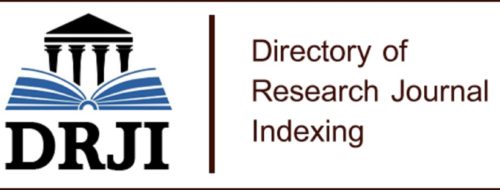Araştırma Makalesi
Yıl 2018,
, 71 - 92, 28.12.2018
Öz
In the 19th century electrical energy available to mankind, it is presented to the public in Turkey in the early 20th century. The fact that it is clean and easy to use and that it can be produced from both fossil and renewable sources makes electricity energy superior to other energy forms. In this study, the factors affecting the electricity consumption of households in Turkey are examined what direction these factors affect electricity consumption. In the study, Partial Proportional Odds Model (PPOM) which is a special type of sequential logit model was used and also marginal effects after estimation were calculated. The study found that monthly income, the number of people living in the household, the housing characteristics, and the technological equipment of the household are significant influences on electricity consumption.
Anahtar Kelimeler
Household Partial Proportional Odds Model Electricity Demand
Kaynakça
- AGRESTI, Alan; (2002), Categorical Data Analysis, 2th Ed., New Jersey; John Wiley & Sons Publication.
- AKAN, Yusuf ve Tak Soner; (2003), “Türkiye Elektrik Enerjisi Ekonometrik Talep Analizi”, İİBF Dergisi, 17(1-2), ss. 21-49.
- AKGÜL, Sevim; (2013), “Yapay Sinir Ağları ile Türkiye Elektrik Enerjisi Talep Tahmini ve Diğer Yöntemlerle Karşılaştırmalı Analizi”, Doktora Tezi, Erzurum: Atatürk Üniversitesi Sosyal Bilimler Enstitüsü.
- AKIN, Emre; (2010), “Hane Halkları Elektrik Talebi”, Yüksek Lisans Tezi, Denizli: Pamukkale Üniversitesi Sosyal Bilimler Enstitüsü.
- AMEMIYA, Takeshi; (1973), “Regression Analysis When The Dependent Variable is Truncated Normal”, Econometrica: Journal of The Econometric Society, 41(6), ss. 997-1016.
- ANANTH, Cande and Kleinbaum David; (1997), “Regression Models for Ordinal Responses: A Review of Methods and Applications”, International Journal of Epidemiology, 26(6), ss. 1323-1333.
- ARI, Erkan; Noyan AYDIN; Semih KARACAN ve Sinan SARACLI; (2016), “Analysis of Households' Electricity Consumption with Ordered Logit Models: Example of Turkey”, International Journal of Humanities and Social Science Invention, 5(6), ss. 73-84.
- BELLOUMI, Mounir; (2009), “Energy Consumption and GDP in Tunisia: Cointegration and Causality Analysis”, EnergyPolicy, 37 ss. 2745-2753.
- BLÁZQUEZ, Letici; Nina BOOGEN and Massimo FILIPPINI; (2013), “Residential Electricity Demand in Spain: New Empirical Evidence Using Aggregate Data”, Energy Economics, 36, ss. 648-657.
- CRAMER, Jan Salomon; (2003), Logit Models From Economics And Other Fields, UK: Cambridge University Press.
- DONATOS, George and MERGOS George; (1991), “Residential Demand For Electricity: The Case of Greece”, Energy Economics, 13(1), ss. 41-47.
- ERDOĞDU, Erkan; (2006), “Electricity Demand Analysis Using Cointegration and ARMA Modelling: A Case Study of Turkey”, EnergyPolicy, 35, ss. 1129-1146.
- FUKS, Mauricio and SALAZAR, Esther; (2008), “Applying Models For Ordinal Logistic Regression To Analysis of Household Electricity Consumption Classes in Rio De Janeiro, Brazil”, Energy Economics, 30(4), ss. 1672-1692.
- GÜLOĞLU, Bülent ve AKIN, Emre; (2014), “Türkiye’de Hane Halkları Elektrik Talebinin Belirleyicileri: Sıralı Logit Yaklaşımı”, Siyaset, Ekonomi ve Yönetim Araştırmaları Dergisi 2(3), ss. 1-20.
- LOKMANOĞLU, Özgü; (2004), Türkiye Enerji Sektörü ve Elektrik Enerjisi Talep Tahmininin Ekonometrik Olarak İncelenmesi (1980-2002), Yüksek Lisans Tezi, Osmangazi Üniversitesi Sosyal Bilimler Enstitüsü, Eskişehir.
- MCLOUGHLIN, Fintan; Aidan DUFFY and Michael CONLON; (2012), “Characterising Domestic Electricity Consumption Patterns By Dwelling and Occupant Socio-Economic Variables: An Irish Case Study”, Energy and Buildings, 48, ss. 240-248.
- NAWAZ, Saima; (2013), “Electricity Demand in Pakistan: A Nonlinear Estimation”, The Pakistan Development Review, 52(4), ss. 479-491.
- ÖZER, Hüseyin; (2004), Nitel Değişkenli Ekonometrik Modeller Teori ve Bir Uygulama, 1. Basım, Ankara: Nobel Yayın Dağıtım.
- Powers, Daniel and Yu, Xie; (2008), Statistical Methods for Categorical Data Analysis, 2th Ed., USA: Emerald Group Publishing.
- TIWARI, Piyush; (2000), “Architectural, Demographic, And Economic Causes of Electricity Consumption in Bombay”, Journal of Policy Modeling, 22(1), ss. 81-98.
- WANG, Xuesong and ABDEL-ATY Mohamed; (2008), “Analysis of Left-Turn Crash Injury Severity by Conflicting Pattern Using Partial Proportional Odds Models”, Accident Analysis & Prevention, 40(5), ss. 1674-1682.
- WANG, Zhaohua; Nin ZHANG; Jianhua YIN; Yixiang ZHANG; (2011), “Determinants and Policy Implications for Household Electricity-Saving Behaviour: Evidence From Beijing, China”, Energy Policy, 39(6), ss. 3550-3557.
- WILLIAMS, Richard; (2006), “Generalized Ordered Logit/Partial Proportional Odds Models for Ordinal Dependent Variables”, Stata Journal, 6(1), ss. 58-82.
- WILLIAMS, Richard; (2016), “Understanding and Interpreting Generalized Ordered Logit Models”, The Journal of Mathematical Sociology, 40(1), ss. 7–20.
- YOO, Seung-Hoon; (2005), “Electricity Consumption and Economic Growth: Evidence from Korea”, Energy Policy, 33, ss. 1627-1632.
Yıl 2018,
, 71 - 92, 28.12.2018
Öz
19. yy’da insanlığın kullanımına sunulan elektrik enerjisi 20. yy’ın başlarında Türkiye’de halkın hizmetine sunulmuştur. Temiz ve kolay bir kullanımının olması, hem fosil hemde yenilenebilir kaynaklardan üretilebilmesi elektrik enerjisini diğer enerji formlarından üstün kılmaktadır. Çalışmada Türkiye için hanehalkı elektrik tüketimini etkileyen faktörlerin neler olduğu ve bu faktörlerin elektrik tüketimini ne yönde etkilediği araştırılmıştır. Çalışmada sıralı logit modelin özel bir türü olan Kısmi Oransal Bahis Modeli (PPOM) kullanılmış ve ayrıca tahmin sonrası marjinal etkiler hesaplanmıştır. Çalışma sonucunda aylık gelir, hanede yaşayan kişi sayısı, konut özellikleri ve hanedeki teknolojik aletlerin elektrik tüketimi üzerinde önemli etkileri olduğu tespit edilmiştir.
Anahtar Kelimeler
Kaynakça
- AGRESTI, Alan; (2002), Categorical Data Analysis, 2th Ed., New Jersey; John Wiley & Sons Publication.
- AKAN, Yusuf ve Tak Soner; (2003), “Türkiye Elektrik Enerjisi Ekonometrik Talep Analizi”, İİBF Dergisi, 17(1-2), ss. 21-49.
- AKGÜL, Sevim; (2013), “Yapay Sinir Ağları ile Türkiye Elektrik Enerjisi Talep Tahmini ve Diğer Yöntemlerle Karşılaştırmalı Analizi”, Doktora Tezi, Erzurum: Atatürk Üniversitesi Sosyal Bilimler Enstitüsü.
- AKIN, Emre; (2010), “Hane Halkları Elektrik Talebi”, Yüksek Lisans Tezi, Denizli: Pamukkale Üniversitesi Sosyal Bilimler Enstitüsü.
- AMEMIYA, Takeshi; (1973), “Regression Analysis When The Dependent Variable is Truncated Normal”, Econometrica: Journal of The Econometric Society, 41(6), ss. 997-1016.
- ANANTH, Cande and Kleinbaum David; (1997), “Regression Models for Ordinal Responses: A Review of Methods and Applications”, International Journal of Epidemiology, 26(6), ss. 1323-1333.
- ARI, Erkan; Noyan AYDIN; Semih KARACAN ve Sinan SARACLI; (2016), “Analysis of Households' Electricity Consumption with Ordered Logit Models: Example of Turkey”, International Journal of Humanities and Social Science Invention, 5(6), ss. 73-84.
- BELLOUMI, Mounir; (2009), “Energy Consumption and GDP in Tunisia: Cointegration and Causality Analysis”, EnergyPolicy, 37 ss. 2745-2753.
- BLÁZQUEZ, Letici; Nina BOOGEN and Massimo FILIPPINI; (2013), “Residential Electricity Demand in Spain: New Empirical Evidence Using Aggregate Data”, Energy Economics, 36, ss. 648-657.
- CRAMER, Jan Salomon; (2003), Logit Models From Economics And Other Fields, UK: Cambridge University Press.
- DONATOS, George and MERGOS George; (1991), “Residential Demand For Electricity: The Case of Greece”, Energy Economics, 13(1), ss. 41-47.
- ERDOĞDU, Erkan; (2006), “Electricity Demand Analysis Using Cointegration and ARMA Modelling: A Case Study of Turkey”, EnergyPolicy, 35, ss. 1129-1146.
- FUKS, Mauricio and SALAZAR, Esther; (2008), “Applying Models For Ordinal Logistic Regression To Analysis of Household Electricity Consumption Classes in Rio De Janeiro, Brazil”, Energy Economics, 30(4), ss. 1672-1692.
- GÜLOĞLU, Bülent ve AKIN, Emre; (2014), “Türkiye’de Hane Halkları Elektrik Talebinin Belirleyicileri: Sıralı Logit Yaklaşımı”, Siyaset, Ekonomi ve Yönetim Araştırmaları Dergisi 2(3), ss. 1-20.
- LOKMANOĞLU, Özgü; (2004), Türkiye Enerji Sektörü ve Elektrik Enerjisi Talep Tahmininin Ekonometrik Olarak İncelenmesi (1980-2002), Yüksek Lisans Tezi, Osmangazi Üniversitesi Sosyal Bilimler Enstitüsü, Eskişehir.
- MCLOUGHLIN, Fintan; Aidan DUFFY and Michael CONLON; (2012), “Characterising Domestic Electricity Consumption Patterns By Dwelling and Occupant Socio-Economic Variables: An Irish Case Study”, Energy and Buildings, 48, ss. 240-248.
- NAWAZ, Saima; (2013), “Electricity Demand in Pakistan: A Nonlinear Estimation”, The Pakistan Development Review, 52(4), ss. 479-491.
- ÖZER, Hüseyin; (2004), Nitel Değişkenli Ekonometrik Modeller Teori ve Bir Uygulama, 1. Basım, Ankara: Nobel Yayın Dağıtım.
- Powers, Daniel and Yu, Xie; (2008), Statistical Methods for Categorical Data Analysis, 2th Ed., USA: Emerald Group Publishing.
- TIWARI, Piyush; (2000), “Architectural, Demographic, And Economic Causes of Electricity Consumption in Bombay”, Journal of Policy Modeling, 22(1), ss. 81-98.
- WANG, Xuesong and ABDEL-ATY Mohamed; (2008), “Analysis of Left-Turn Crash Injury Severity by Conflicting Pattern Using Partial Proportional Odds Models”, Accident Analysis & Prevention, 40(5), ss. 1674-1682.
- WANG, Zhaohua; Nin ZHANG; Jianhua YIN; Yixiang ZHANG; (2011), “Determinants and Policy Implications for Household Electricity-Saving Behaviour: Evidence From Beijing, China”, Energy Policy, 39(6), ss. 3550-3557.
- WILLIAMS, Richard; (2006), “Generalized Ordered Logit/Partial Proportional Odds Models for Ordinal Dependent Variables”, Stata Journal, 6(1), ss. 58-82.
- WILLIAMS, Richard; (2016), “Understanding and Interpreting Generalized Ordered Logit Models”, The Journal of Mathematical Sociology, 40(1), ss. 7–20.
- YOO, Seung-Hoon; (2005), “Electricity Consumption and Economic Growth: Evidence from Korea”, Energy Policy, 33, ss. 1627-1632.
Toplam 25 adet kaynakça vardır.
Ayrıntılar
| Birincil Dil | Türkçe |
|---|---|
| Bölüm | Makaleler |
| Yazarlar | |
| Yayımlanma Tarihi | 28 Aralık 2018 |
| Kabul Tarihi | 26 Ekim 2018 |
| Yayımlandığı Sayı | Yıl 2018 |
Cited By
Investigation of the Effect of Natural Gas Consumption on Electricity Consumption: The Case of Muş Province
International Journal of Pure and Applied Sciences
https://doi.org/10.29132/ijpas.1086618
Daylight Saving Time policy and energy consumption
Energy Reports
Sinan Küfeoğlu
https://doi.org/10.1016/j.egyr.2021.08.025













ERÜ İktisadi ve İdari Bilimler Fakültesi Dergisi 2021 | iibfdergi@erciyes.edu.tr
Bu eser Creative Commons Atıf-Gayri Ticari-Türetilemez 4.0 Uluslararası Lisansı ile lisanslanmıştır.


